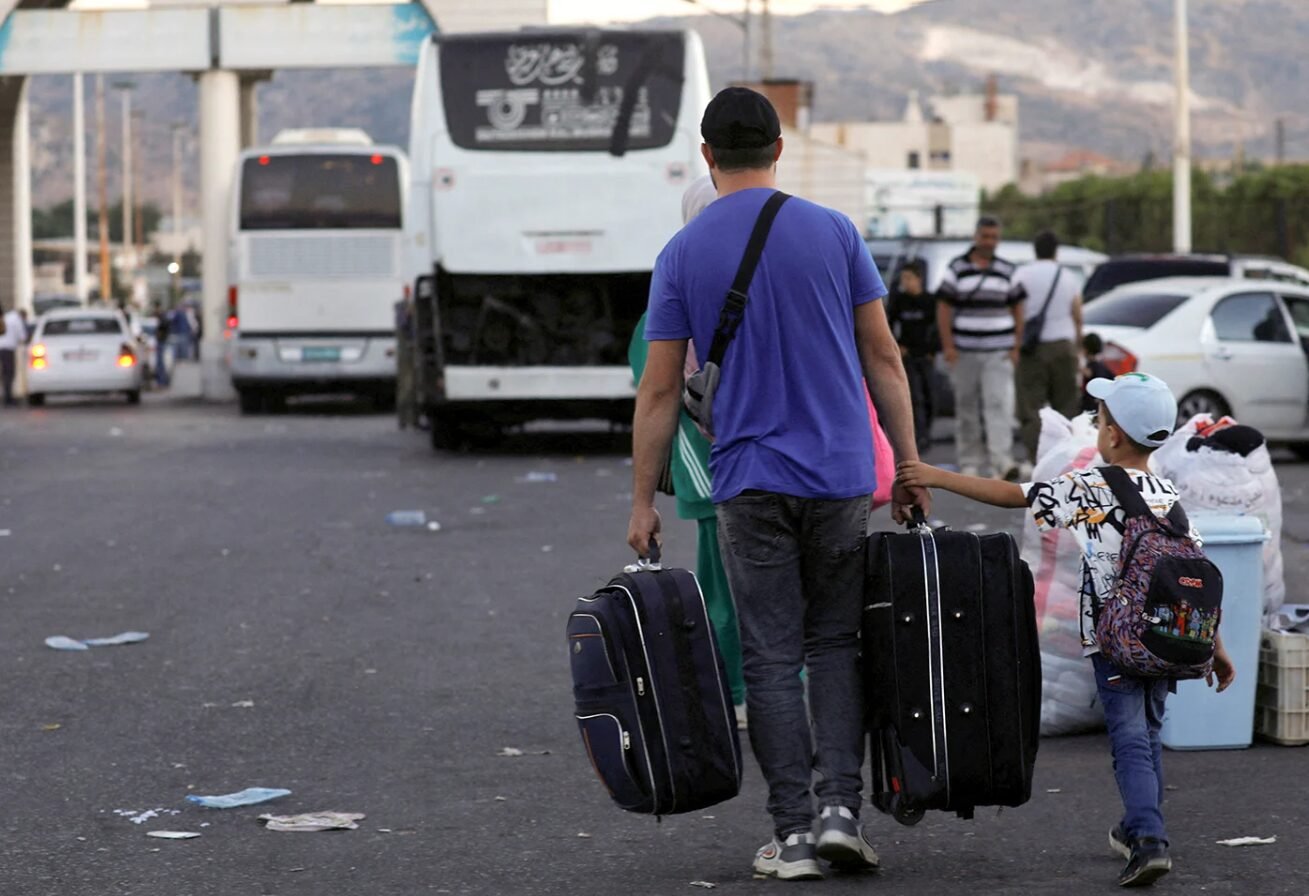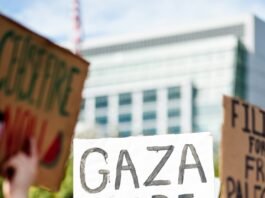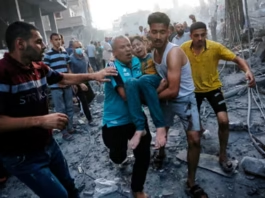The Plight of Syrian Refugees in Lebanon
The situation of over 300,000 Syrian refugees currently residing in Lebanon is dire, marked by a multitude of challenges that jeopardize their safety and well-being. These individuals have fled their homeland due to a brutal civil war, only to find themselves in a country that offers little in terms of security. One of the most pressing threats is the ongoing Israeli bombardments in the region, which exacerbate an already volatile environment. The refugees often live in a state of heightened anxiety, fearful not only of external attacks but also of the overarching instability that characterizes their daily lives.
Add to this the significant pressure on them to return to Syria. The Lebanese government and various factions frequently advocate for the repatriation of Syrian refugees, arguing that conditions in certain areas have improved. However, this narrative contrasts starkly with the lived experiences of those who fled. Many survivors of past persecutions carry deep psychological trauma that complicates their ability to envisage a return, even to areas deemed safer. For a considerable portion of the refugee population, the prospect of returning to their homeland is fraught with peril, as they fear persecution or violence from the Syrian regime or other hostile groups.
Statistics reveal that a mere fraction of these refugees feel secure enough to contemplate returning home. Many express concerns over safety, lack of basic services, and the potential for renewed violence should they abandon their temporary haven in Lebanon. This phenomenon illustrates the depth of their plight—a complex web of fear, trauma, and uncertainty that is unlikely to dissipate in the foreseeable future. Thus, the Syrian refugees in Lebanon remain trapped in a precarious situation, caught between the immediate threat of violence in their host country and the grim realities of returning to Syria.
The Impact of Ongoing Conflict in Syria
The conflict in Syria has escalated significantly since its inception in 2011, evolving into a complex war with numerous actors involved, each with their own agendas. The pro-government forces, supported by Iranian militias and international allies, such as Russia, engage in relentless fighting against various opposition groups across multiple front lines. The presence of these diverse military factions has not only intensified the battle for territorial control but has also deepened the humanitarian crisis affecting millions of civilians.
As the fighting continues, the risks to innocent lives remain alarmingly high. Aerial bombardments, primarily carried out by the Syrian government, often target civilian areas, leading to significant casualties and widespread destruction of infrastructure. This tactic has created an environment of fear and uncertainty for those who contemplate returning to their homeland. The ongoing clashes and the destructive impact of airstrikes contribute to an already dire humanitarian situation, rendering access to basic necessities, such as food, healthcare, and clean water, increasingly precarious.
In addition to state-sponsored violence, the presence of non-state armed groups such as Da’esh poses another layer of danger for those living in conflict-affected regions. These militias, while reduced in power compared to earlier years, still engage in brutal tactics that threaten local populations. The potential for resurgence, combined with existing hostilities, heightens the risk for any displaced individual considering a return to Syria. Such complexities multiply the challenges faced by refugees who are stuck in a harrowing limbo, torn between the ongoing threats of violence in Syria and their precarious situations in refuge countries.
Ultimately, the multifaceted nature of the Syrian conflict, characterized by relentless violence and profound instability, illustrates the dire circumstances faced by civilians. The presence of various armed groups, along with the continued bombardment, creates an environment where returning home remains fraught with danger and uncertainty.
Human Rights Violations and Humanitarian Crisis
The ongoing conflict in Syria has resulted in widespread and egregious human rights violations that have been meticulously documented by independent international commissions of inquiry. These reports detail not only the violence inflicted upon civilians but also the systematic abuses committed by various armed groups, including government forces. Millions of Syrians have been subjected to extrajudicial killings, torture, forced disappearances, and sexual violence, contributing to a profound humanitarian crisis.
As of the latest estimates, approximately 13.4 million people in Syria are in urgent need of humanitarian assistance, encompassing food, medical care, and shelter. This staggering figure highlights not only the scale of suffering but also the complexity of delivering aid amidst ongoing conflict. Relief organizations struggle to operate effectively due to security concerns, restricted access, and bureaucratic hurdles imposed by conflicting parties. Moreover, the funding shortfall for emergency assistance has reached critical levels, endangering the lives of vulnerable populations who depend on external aid for survival.
The implications of these human rights abuses extend beyond immediate suffering. The international community faces a moral imperative to respond, yet political dynamics often hinder effective action. During a recent United Nations committee meeting, several countries expressed varying degrees of concern regarding the situation in Syria. However, a unified approach remains elusive, with geopolitical interests often influencing the discourse. As humanitarian needs escalate, the response from global leaders has, in many cases, fallen short of addressing the magnitude of the crisis, resulting in a deepening sense of despair among the Syrian populace.
The weight of these ongoing human rights violations and the resultant humanitarian crisis necessitates urgent action to protect civilians and support those who have borne the brunt of this devastating conflict. Only through a concerted effort can the international community hope to mitigate the dire situation faced by millions of Syrians.
Calls for Action and the Road Ahead
The ongoing humanitarian crisis in Syria demands a cohesive and robust response from the international community. As the conflict intensifies, there have been increasing calls for de-escalation and accountability regarding the human rights violations that Syrians endure daily. Multiple nations and global organizations advocate for diplomatic interventions that prioritize humanitarian needs. Collective action is necessary to mitigate the impacts of violence and persecution faced by the Syrian population, particularly as they navigate the dual threats of bombs and systemic oppression.
The situation calls for responsible engagement from all parties involved. This includes governments that have influence over the crisis, humanitarian organizations, and international regulatory bodies responsible for upholding human rights standards. The role of international courts cannot be understated; they serve as vital platforms for addressing grievances and holding perpetrators accountable. Legal action should not only focus on the conduct of military forces but also scrutinize other entities contributing to the ongoing crisis. The pursuit of justice remains pivotal in rebuilding trust and fostering peace in the region.
Furthermore, the significance of funding humane aid programs is paramount. Non-governmental organizations (NGOs) and other humanitarian actors must be financially supported to effectively respond to the urgent needs of displaced individuals and vulnerable communities. This includes providing essential services such as food, shelter, and medical care. The complexity of the crisis necessitates a multifaceted approach—one that aligns immediate humanitarian assistance with long-term strategies aimed at reconciliation, rebuilding, and stability.
In conclusion, as the international community grapples with the multifarious issues in Syria, it is imperative to remain vigilant and proactive. Comprehensive strategies, active involvement of various stakeholders, and a commitment to addressing the root causes of the crisis can pave the way for meaningful change and restoration of dignity for the Syrian people.




